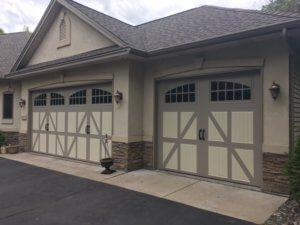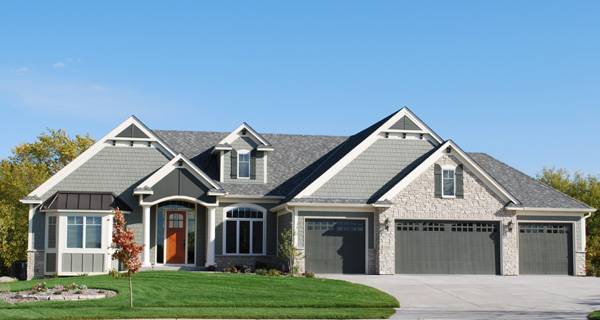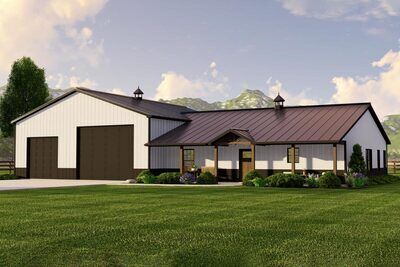
Adding garage shelving can increase the amount of storage space available in your garage. There are many different types of garage shelving available, including freestanding and wall-mounted. But it is essential to select a unit that is sturdy enough to store the items you have in your garage. You should also choose the right material when choosing a shelving unit. Some materials are more durable and are more resistant to stains and spills than others.
Garage shelving is available in metal, particleboard, and MDF. Particle board is light but more likely to stain than steel. If you need to store heavy items, like tools and equipment you may choose to use a heavier-duty shelving unit.
Wall-mounted shelves can be a great way to maximize storage space. Mounted shelves are attached to garage walls with brackets. These brackets can be made from metal and attached to your garage wall using studs. For best results, you should mount the shelves at least 16 inches from the floor and 20 inches apart. Ceiling-mounted shelving systems with a downward projection can be used. Unlike a freestanding unit, these aren't heavy, so they are easier to move around.

Freestanding units can be made of metal or wood and can be mounted to the ceiling or wall. While they have a greater flexibility than other types of shelving units, they require more floor space. You'll need a drill, and tools to install them.
Adjustable rail shelves are commonly made of steel wire or chrome mesh. The vertical metal tracks are mounted in the wall, and the brackets fit into the slots. They can be adjusted to allow you to add or take out items as necessary. Although the shelves are intended to support heavy objects, they can be easily movable to provide more storage space.
Particle board works well for shelving, but it can stain when a can of engine fluid leaks. Metal shelving is nonporous so it doesn't absorb any chemicals. It's ideal for storing paint, and other chemical-based products.
MDF or particle board are a good option if you don’t need to store heavy items but don’t mind sacrificing structural integrity. Both are sturdy and easy to assemble. Additionally, some units have a powder coating that helps prevent scratches and dents.

MDF and particles board are usually lighter than metal. However, their weight capacities aren't much higher. Plastic shelving can be moved easily and is much cheaper than MDF. You should also be aware that plastic shelving is more easy to clean than MDF so it might not work well in a messy, wet or dusty garage.
An adjustable rail shelf is another option. This kind of shelving can be adjusted to your liking, but you will need to locate studs in your wall to attach it to. These shelves won't work well with concrete drywall.
Garage shelving prices will vary depending on the material used. The material you choose to use will also impact your energy costs. Be sure to use a temperature-controlled space if you plan to store food or hazardous materials. You should also cover the shelves to keep spills and stains out.
FAQ
What is included in a full-scale kitchen remodel?
A complete kitchen renovation involves more than simply replacing the sink and faucet. You can also get cabinets, countertops or appliances, as well as flooring and plumbing fixtures.
Full kitchen remodels allow homeowners to modernize their kitchens without the need for major construction. This means there is no need to tear down the kitchen, making the project more manageable for both the homeowner as well as the contractor.
Many services are required for kitchen renovations, such as electrical, plumbing and HVAC. Depending on the scope of the project, multiple contractors might be needed to remodel a kitchen.
It is best to work with professionals who have experience in kitchen remodeling. Small issues can lead to delays when there are many moving parts involved in a kitchen remodel. DIY projects can cause delays so make sure you have a backup plan.
What order should you renovate your house?
The roof. The plumbing follows. Third, the wiring. Fourth, walls. Fifth, the floors. Sixth, are the windows. Seventh, doors. Eighth is the kitchen. Ninth are the bathrooms. Tenth, the garage.
After you have completed all of these tasks, you will be ready to go to the attic.
It is possible to hire someone who knows how to renovate your house. You will need patience, time, and effort when renovating your own home. It will also cost money. You don't need to put in the effort or pay the money.
Renovations aren't cheap, but they can save you tons of money in the long run. A beautiful home can make your life easier.
What should I do about my cabinets?
It all depends on whether or not you plan to rent your home out. If you're planning to sell, you'll probably want to remove and refinish the cabinets. This gives buyers the impression that they're brand new and helps them envision their kitchens after moving in.
You should not put the cabinets in your rental house. Tenants often complain about having to clean up dishes and fingerprints from previous tenants.
You might also think about painting your cabinets to make them appear newer. Use a high-quality primer. Low-quality paints can peel off over time.
What are some of the largest costs associated with remodeling your kitchen?
Planning a kitchen renovation can be costly. These include demolition, design fees, permits, materials, contractors, etc. They seem quite small when we consider each of these costs separately. But when you combine them, they quickly add up to be quite significant.
Demolition is most likely the most expensive. This includes the removal of old cabinets, countertops, flooring, and appliances. Next, you will need to remove insulation and drywall. Finally, you have to replace those items with new ones.
You will need to hire an architect for plans. To ensure that the project meets all building codes, permits must be obtained. The final step is to find someone to carry out the actual construction.
Once the job is complete, you will need to pay the contractor. You could spend anywhere from $20,000 to $50,000, depending on how large the job is. Before hiring a contractor, it is vital to get estimates from multiple people.
You can sometimes avoid these costs if you plan. You may be eligible to get better prices on materials, or you might even be able skip some of your work. It is possible to save money and time by knowing what to do.
Many people install their cabinets by themselves. This will save them money as they won't need to hire professional installation services. The problem is that they usually spend more money trying to figure out how to put the cabinets in place themselves. Professionals can typically complete a job in half the time it would take you.
A cheaper way to save money is buying unfinished materials. Before purchasing pre-finished materials like cabinets, you must wait until all the pieces are assembled. You can use unfinished materials immediately if you buy them. Even if it doesn't go according to plan, you can always change your mind later.
Sometimes, it's just not worth the effort. It is important to plan your home improvement projects in order to save money.
What is it worth to tile a bathroom?
If you're going to do it yourself, you might as well go big. It's an investment to remodel a full bathroom. However, quality fixtures and materials are worth the long-term investment when you consider how beautiful a space will be for many years.
The right tiles can make all the difference in how your space looks and feels. Here's how to choose the right tiles for your home, regardless of whether it's a small renovation or major project.
First, you need to choose which flooring material you want. The most common options are ceramics, stone, porcelain, and natural timber. Then, select a style--like classic subway tile or geometric patterns. Finally, pick a color palette.
For large bathroom remodels, you will likely want the tiles to match the rest of your room. You could choose to use white subway tiles for the kitchen and bathroom, while using darker colors in other rooms.
Next, estimate the scope of work. Do you think it is time to remodel a small powder-room? Or, would you rather have a walkin closet in your master bedroom?
After you have determined the scope of work, visit local shops to see samples. You can then get a feel of the product and how it is installed.
Finally, shop online for great deals on ceramic and porcelain tiles. Many retailers offer free shipping or discounts on bulk orders.
How long does it typically take to renovate a bathroom?
A bathroom remodel typically takes around two weeks. This depends on the size and complexity of the project. A few small jobs, like installing a vanity or adding a bathroom stall, can be done in one day. Larger projects such as removing walls, laying tile floors, or installing plumbing fixtures may require several days.
The rule of thumb is that you should allow three days for each room. For example, if you have four bathrooms you would need twelve days.
Statistics
- Windows 3 – 4% Patio or backyard 2 – 5% (rocketmortgage.com)
- 55%Universal average cost: $38,813Additional home value: $22,475Return on investment: 58%Mid-range average cost: $24,424Additional home value: $14,671Return on investment: (rocketmortgage.com)
- According to a survey of renovations in the top 50 U.S. metro cities by Houzz, people spend $15,000 on average per renovation project. (rocketmortgage.com)
- Attic or basement 10 – 15% (rocketmortgage.com)
- $320,976Additional home value: $152,996Return on investment: 48%Mid-range average cost: $156,741Additional home value: $85,672Return on investment: (rocketmortgage.com)
External Links
How To
How can you plan a bathroom without breaking the bank?
The most important thing about any remodeling project is to make sure you can afford it. You can't expect to be able pay for it later, so make sure you have enough money.
It is important to plan carefully and understand the costs involved in a bathroom renovation. Bathroom remodeling projects can be quite costly.
Labor costs are one of your biggest expenses. Labor costs vary depending on the size of the job and whether you hire a professional contractor or a DIYer. Professional contractors are usually more expensive than DIYers because they have the experience and expertise.
Materials are another major expense. Prices can vary depending on the material you choose. They may be anywhere between $100 and $1000 per square feet.
The final factor is the cost for energy. This includes both electric and gas bills. Peak demand periods are when energy costs can rise.
You should also consider the time involved in completing the project. Bathroom renovations usually require patience and time. Some projects can take weeks to finish, while others can take months.
Apart from these three major categories, small items such as wallpaper, paint, and flooring add to project's overall costs.
To help you determine the best way to approach your bathroom remodeling project, here are some tips to keep in mind:
-
Determine your Budget - Before you begin any remodeling project, it is important to determine what you can afford. It doesn’t matter if your budget is tight or not. Setting a realistic budget is key to knowing where you stand financially.
-
Plan ahead - Try to plan your bathroom remodeling for the off-season if you can. You'll be able to save money heating and cooling your home in the winter months due to lower energy usage. You might even want to plan your remodel in the evening when less people use the toilet.
-
Look around - After you have established your budget, it is time to start looking for vendors. You have many options, including local shops, online retailers and even family members who are willing to collaborate on your project.
-
Choose an Estimator – Once you have identified all potential vendors, you need to contact each individual for estimates. It is important to get multiple quotes in order to receive the most competitive pricing.
-
Get Multiple Estimates. - After getting your initial estimates you can compare them against each another to determine which vendor offers the best price. Once you have located the vendor, ask them to send you a written estimation.
-
You should include all costs in your estimate. Make sure to include all fees and taxes that might apply in your area.
-
You shouldn't overlook small details. When you plan your bathroom remodel, don't forget the important details. Are you looking for a new toilet, or do you just need one? Do you have enough space for a shower curtain rod in your bathroom? These adjustments can easily raise the cost of the project.
-
Take into account insurance - It is important that you check with your insurance company about the extent of your bathroom remodel to ensure you have sufficient coverage. You could end up paying more if you don't.
-
Hire a Professional - Once your bathroom remodel is complete, you should always hire a professional to put in the final fixtures. It is possible to complete the task yourself, but it is better to let someone else do it.